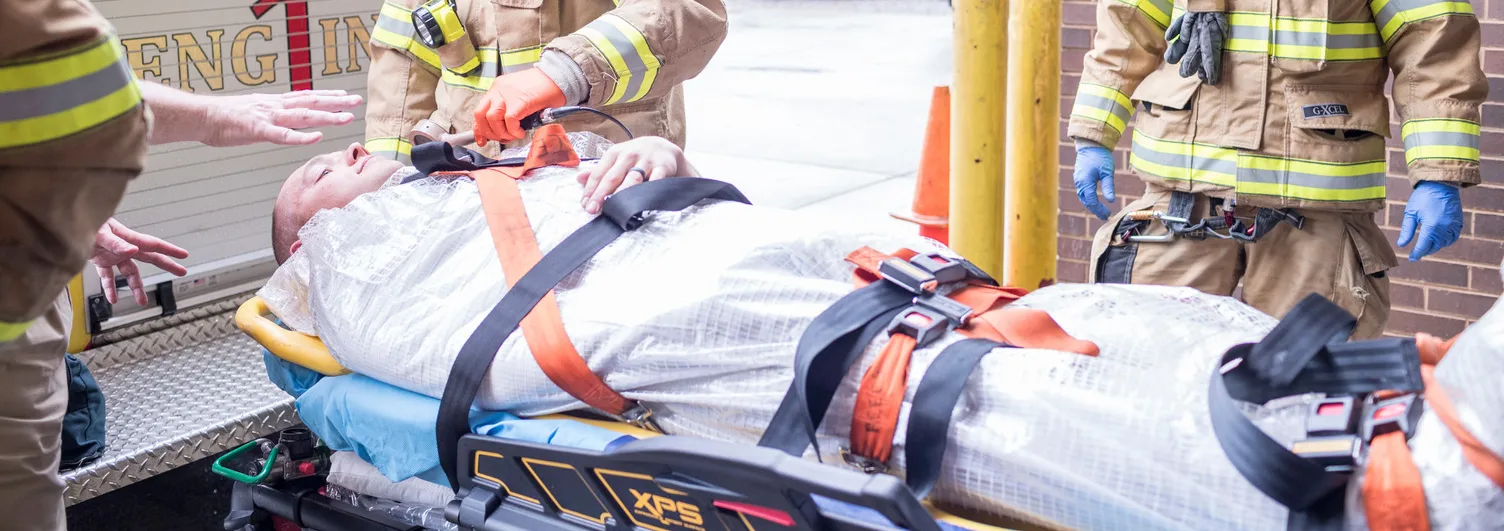
Guidance for Radiation Accident Management
Procedure Demonstrations
Watch the following procedure demonstrations for managing the care of patients with radiation illness or injury, including donning protective clothing, removing contaminated clothing, decontaminating wounds and intact skin, and doffing protective clothing.
Personal protective equipment: Donning
When caring for a radiologically contaminated patient, personal protective equipment (PPE) should always be worn. PPE is used to prevent radioactive substances from making direct contact with, or entering, the body. Respiratory protection is intended to prevent the inhalation of radioactive substances, resulting in internal contamination. PPE choices should also take into consideration protection from other hazards, such as bloodborne pathogens or chemical agents that may require higher levels of protection.
There are many types of PPE that may be worn to protect the responder or provider when caring for a radiologically contaminated patient. For instance, items such as surgical gowns may replace the use of coveralls. It is essential that all persons involved in the management and use of PPE are aware of its capabilities and limitations. What follows is one example of appropriate donning of PPE.
Removing contaminated clothing
Removing a patient’s clothing will help eliminate a considerable amount of contamination. Clothing removal should be done in a controlled fashion to minimize the spread of contamination. Lifesaving interventions should take priority over clothing removal and patient decontamination.
Wound decontamination
Wounds provide a pathway for internal radiological contamination. In general, radiological surveys and decontamination efforts should be in the following order: wounds, body orifices, intact skin. Patient comfort should be addressed before managing a wound. Pain medication may be administered to the patient just as it would when managing a non-radiologically contaminated wound.
During decontamination efforts and patient care, the provider’s outer gloves should be changed or surveyed after contact with potentially contaminated material.
Always provide lifesaving interventions prior to decontamination or stop decontamination efforts if the patient becomes unstable.
Intact skin decontamination
Intact skin provides a natural barrier to many radiological contaminants. Immediate damage to skin likely comes from physical or chemical insult, and not radiation. If the material is corrosive or damaging to the skin, remove it by the most immediate and appropriate method. In general, radiological surveys and decontamination efforts should be in the following order: wounds, body orifices, intact skin.
During decontamination efforts and patient care, the provider’s outer gloves should be changed or surveyed after contact with potentially contaminated material.
Always provide lifesaving interventions prior to decontamination or stop decontamination efforts if the patient becomes unstable.
Removing personal protective equipment: Doffing
What follows is one example of appropriate doffing or removing of PPE.

